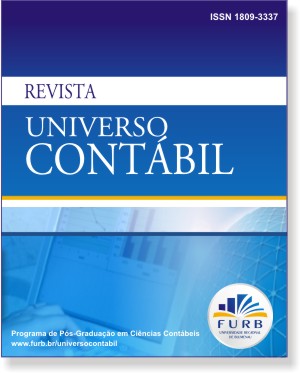A ILUSÃO MONETÁRIA E A INFORMAÇÃO CONTÁBIL E FINANCEIRA
DOI:
https://doi.org/10.4270/ruc.20106Palabras clave:
Informação Contábil, Ilusão Monetária, Processo de DecisãoResumen
O presente estudo analisa os resultados de um experimento realizado para avaliar o impacto do fenômeno conhecido como ilusão monetária no campo das informações contábeis. Esse experimento replica parcialmente e com as adaptações necessárias o que foi realizado por Shafir, Diamond e Tversky em 1997 e que foi pioneiro na abordagem psicológica desse fenômeno. O experimento em questão, ao contrário do original, foi realizado com uma amostra de pessoas em princípio mais familiarizadas em raciocinar em termos reais (estudantes de Ciências Contábeis e Administração), pessoas essas que, além disso, vivem em um país que em passado recente conheceu taxas inflacionárias muito elevadas. A essas pessoas foram propostos três problemas de decisão envolvendo aspectos econômicos e formulados com base em informações contábeis. Os resultados obtidos revelam que os vieses de raciocínio observados no experimento original se repetem mesmo em uma amostra com as características anteriormente descritas. Esses resultados sugerem a necessidade da adoção de medidas para mitigar o impacto desse fenômeno sobre o processo decisório, medidas essas não só de caráter educativo, mas também normativo.
Descargas
Descargas
Publicado
Cómo citar
Número
Sección
Licencia
Los derechos de autor de los artículos publicados en esta revista son del autor, y los derechos de primera publicación son de la revista. Por aparecer en esta revista de acceso público los artículos son de uso gratuito, con atribuciones específicas, en aplicaciones educativas y no comerciales. La revista permitirá el uso de trabajos publicados con fines no comerciales, incluso el derecho a enviar el trabajo a bases de datos de acceso público.


